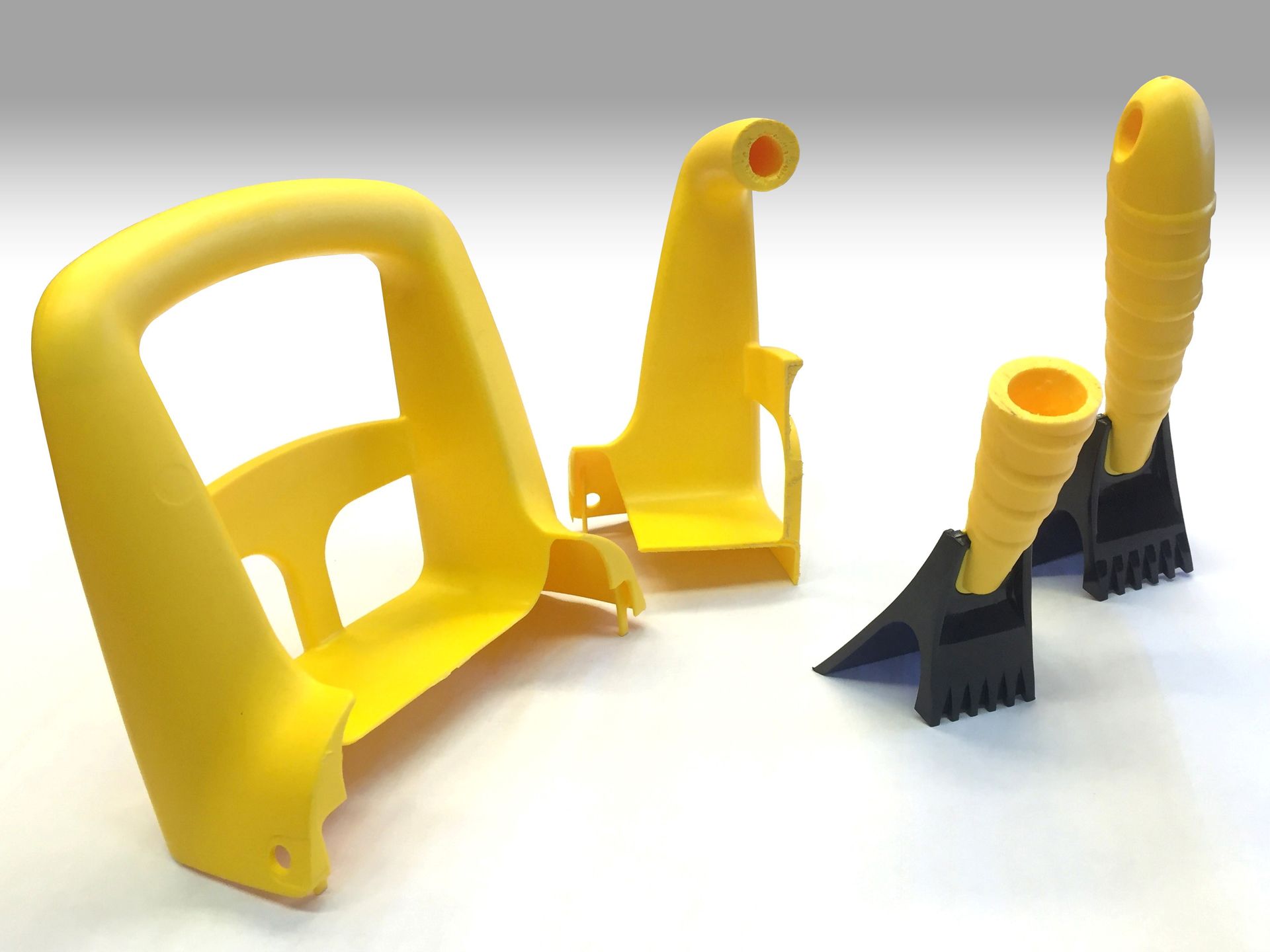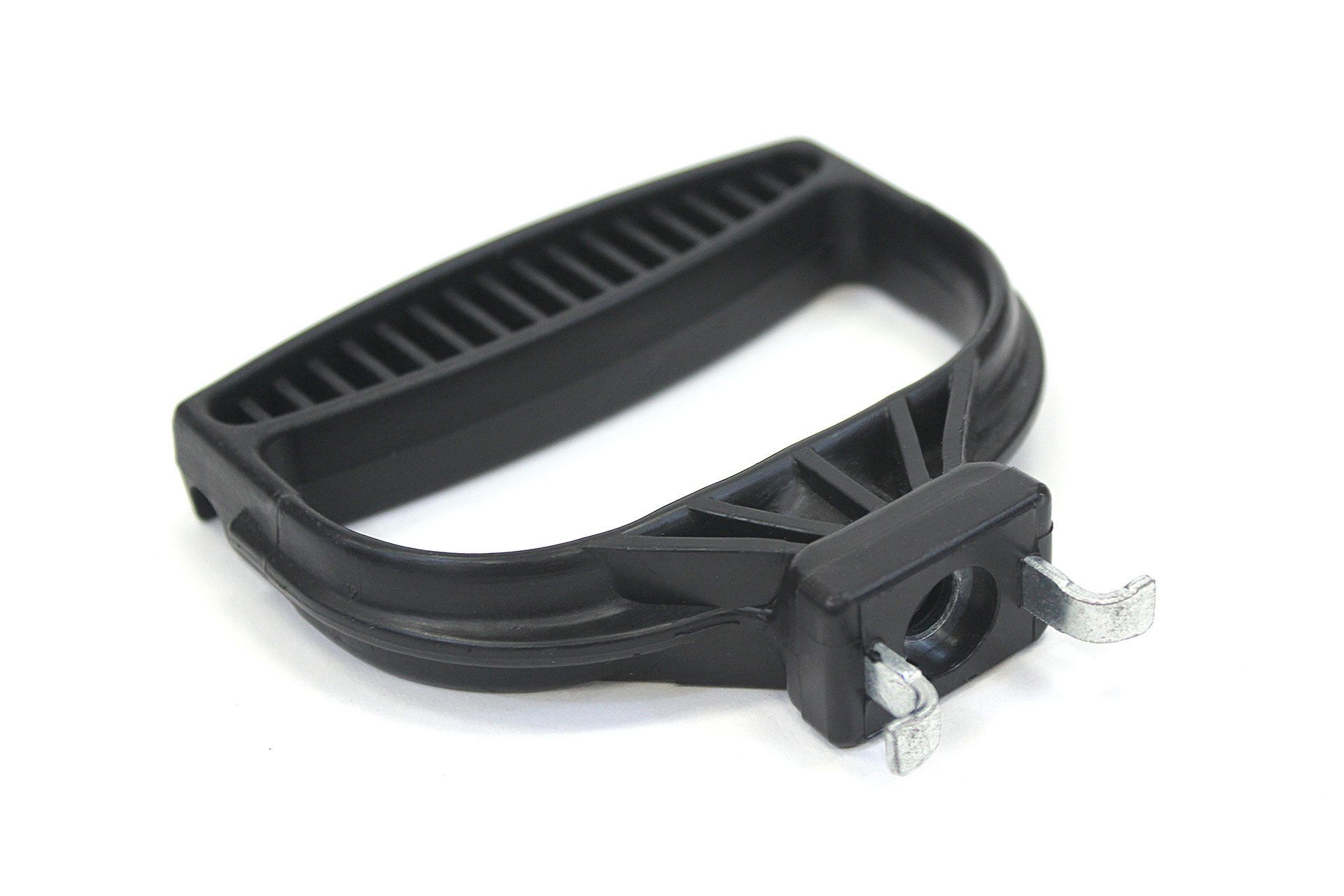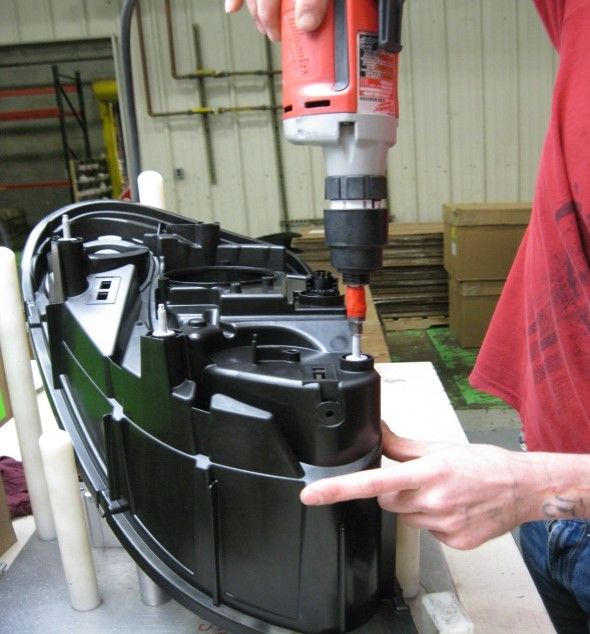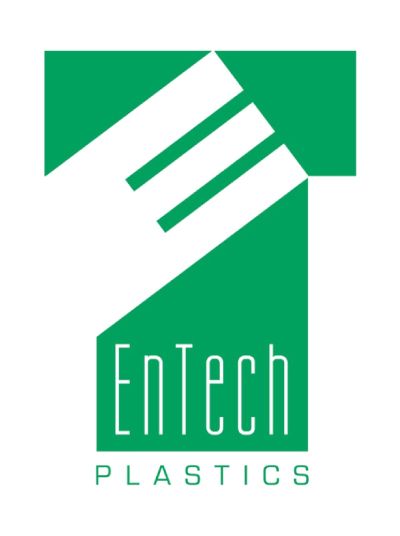Gas Assist Injection Molding
Get Higher Quality Components and Lower Costs
We inject nitrogen gas into the hot melt stream during the molding process, displacing the resin in thick-walled sections, to create a hollow core. This innovative process is ideal for several important reasons:
- Increase Design Options: Since this process is not constrained by typical tool design requirements, parts with complex designs can be produced with less complicated tooling.
- Improve Part Quality: The Gas Assist process creates uniform pressure throughout the part which minimizes any potential warp issues. The technology can also be used to eliminate sink marks at rib and boss locations. Parts with varying wall thicknesses can be molded without the need for complicated cores.
- Reduces Costs: Since Gas Assist parts require less material and run at faster cycle times the corresponding piece prices are reduced accordingly.
- Part Consolidation: With gas assist molding, several components that would normally be produced separately with conventional injection molding can be combined into a single part.

Request a Free Consultation
Learn With EnTech

Every production run tells a story, and sometimes, that story involves parts that don't quite meet specifications. Whether you're dealing with warped components, surface defects, or dimensional inconsistencies, injection molding quality issues can disrupt your operations and strain your bottom line. The good news? Most molding defects follow predictable patterns, and with the right diagnostic approach, they're solvable. Let's walk through a systematic troubleshooting framework that transforms problem parts into perfect components. Understanding the Root Cause: Beyond Surface-Level Fixes When quality issues emerge, the instinct is often to adjust machine parameters immediately. But rushing to solutions without proper diagnosis can create new problems or mask underlying issues. Effective troubleshooting requires understanding the relationship between four critical variables: Material properties – How the resin responds to heat, pressure, and cooling Tool design – Gate location, venting, cooling channel efficiency Process parameters – Temperature, pressure, injection speed, and cycle time Machine capability – Tonnage, shot size, and control precision Quality defects rarely stem from a single source. Instead, they emerge from the interaction between these elements; this is why systematic diagnosis beats guesswork every time. Common Defects and Their Diagnostic Pathways Warpage and Dimensional Instability Parts that twist, bow, or fail to hold tolerances point to uneven cooling or internal stresses. Start by examining cooling channel performance—are all areas of the tool reaching uniform temperatures? Inconsistent wall thickness can also create differential shrinkage, as thicker sections cool more slowly than thin areas. Consider your material selection as well. Some engineered resins exhibit higher shrinkage rates or are more sensitive to processing conditions. Process adjustments often focus on pack pressure, hold time, and mold temperature. Increasing pack pressure and hold time ensures adequate material in the cavity as the part cools, while optimized mold temperature promotes uniform crystallization in semi-crystalline resins. Short Shots and Incomplete Fill When parts don't completely fill—leaving unfilled sections or thin areas—the investigation typically begins with material flow. Is the material reaching all areas of the cavity before it solidifies? Gate location plays a crucial role here. A gate positioned too far from thin-walled sections may allow material to freeze before complete fill. Flow analysis during the tool design phase helps identify potential issues, but sometimes real-world conditions reveal opportunities for optimization. Material temperature, injection speed, and machine tonnage all influence fill quality. Under-tonnage situations prevent adequate clamping force, allowing material to flash rather than fill properly. For low-volume, high-tonnage applications—where part geometry requires substantial clamping force—ensuring your press matches the application is essential. Surface Defects: Flow Lines, Sink Marks, and Blemishes Surface quality issues often trace back to material flow behavior and cooling dynamics. Flow lines appear when material enters the cavity at different temperatures, creating visible boundaries. Increasing material temperature and injection speed typically improves flow front uniformity. Sink marks occur when thick sections or ribs cool unevenly, pulling material inward as it contracts. Strategic use of gas-assisted injection molding can address this challenge by maintaining internal pressure during cooling, preventing surface depression without requiring excessive pack pressure. Surface blemishes might also indicate contamination, moisture in the resin, or venting issues. Proper material drying prevents moisture-related defects like splay or silver streaking. The Systematic Troubleshooting Process Rather than making multiple changes simultaneously, effective troubleshooting follows a disciplined approach: Document current conditions – Record all process parameters, material lot numbers, ambient conditions, and specific defect characteristics. Consistent documentation creates a baseline for comparison. Isolate variables – Change one parameter at a time, allowing several cycles to stabilize before evaluating results. This approach identifies which adjustments actually improve quality versus those that have no effect or make things worse. Verify material specifications – Confirm you're running the correct resin grade with proper drying and handling. Material inconsistencies can mimic process problems, sending troubleshooting efforts down the wrong path. Examine the tool – Inspect gates, vents, and cooling lines for wear, blockages, or damage. A poorly maintained tool creates problems no amount of process adjustment can overcome. Consider the machine – Verify shot size capacity, tonnage adequacy, and control system accuracy. Machines operating at the extreme edges of their capability struggle to deliver consistent quality. Prevention Through Engineering Excellence The most effective quality strategy isn't troubleshooting problems after they emerge—it's preventing them through thoughtful engineering upfront. Flow simulation reveals fill patterns, weld lines, and air trap locations. Material selection guided by application requirements ensures the resin matches the performance demands. Working with a partner who understands both the art and science of injection molding means fewer problem parts and more perfect components from the start. Moving Forward with Confidence Quality issues will emerge—that's the reality of manufacturing. But with systematic diagnostic approaches, technical expertise, and a commitment to continuous improvement, those challenges become opportunities for refinement rather than roadblocks to success. Whether you're troubleshooting current production or planning a new project, the key is partnering with a team that brings both technical depth and practical problem-solving experience to every component. At EnTech Plastics, we've built our reputation on turning complexity into capability. From our Corry, Pennsylvania facility, we deliver precision-engineered custom injection molding solutions for medical, industrial, trucking, and consumer applications—backed by decades of engineering excellence and technological innovation. Have a challenging part that's been causing headaches? Let's talk about transforming those problem parts into perfect components. Contact us today to discuss your project.

You've perfected your design. The 3D printed prototype fits flawlessly, functions exactly as intended, and even impresses the stakeholders. But now comes the reality check: transitioning from that successful 3D printed prototype to injection molded production parts isn't always a straight path forward. At EnTech Plastics, we regularly work with engineers who face this exact challenge. While 3D printing and injection molding both create plastic parts, they operate under fundamentally different rules—and what works brilliantly in additive manufacturing may not be possible to produce using injection molding. The Engineering Reality: Different Processes, Different Design Rules The freedom that makes 3D printing so appealing for prototyping—layer-by-layer construction with infinite geometric possibilities—becomes a constraint when you need to fill a mold cavity with molten plastic under high pressure and temperature. Draft Angles: The Hidden Design Requirement Your 3D printed part likely features perfectly vertical walls, sharp internal corners, and complex geometries built up layer by layer. But injection molding demands draft angles to allow the part to release cleanly from the mold. Those vertical walls that printed perfectly? They'll cause ejection problems, potential part damage, and premature tool wear in injection molding. Every vertical surface needs to be slightly tapered, and every internal corner needs a generous radius to facilitate material flow and part ejection. Wall Thickness: Consistency is Critical 3D printing builds support where needed, allowing for dramatic wall thickness variations within a single part. Injection molding, however, demands consistent wall thickness throughout the part to ensure uniform cooling, minimize warpage, and prevent sink marks or voids. Areas with thick sections will cool more slowly than thin sections, creating internal stresses that can lead to warpage, cracking, or dimensional instability. What appears as elegant design optimization in 3D printing creates significant quality issues in injection molding. Undercuts and Complex Geometries: The Mold Constraint Challenge Perhaps the most significant difference lies in geometric freedom. 3D printing can create virtually any shape—overhangs, internal cavities, interlocking parts, and complex undercuts—all in a single print job. Injection molding requires that every part feature can be formed by the opening and closing of mold halves. Complex undercuts require side actions, lifters, or collapsible cores—sophisticated tooling solutions that add significant cost and complexity to your custom injection molding project. These types of features can be accomplished if there are no design alternatives; in many cases, however, EnTech can provide Design for Manufacturability (DFM) analysis to provide design suggestions that will accomplish the intended function but with lower cost tooling. Gas-Assisted Injection Molding: Bridging the Design Gap Although conventional injection molding requires uniform wall thicknesses, EnTech also offers Gas Assist Injection Molding which accommodates designs that don’t have uniform wall thickness. Gas Assist Injection Molding allows for hollow sections, varying wall thicknesses, and complex internal geometries—bringing some of the design freedom of 3D printing into the injection molding realm. Gas assist injection molding can eliminate sink marks in thick sections, reduce material usage, and enable part consolidation that would otherwise require multiple components or assembly operations (see: https://entechplastics.com/gas-assist . Material Performance: Beyond Geometric Constraints The materials themselves behave differently between processes. Most 3D printing materials are designed for layer adhesion and printability, while engineered resins used in injection molding are optimized for flow characteristics, dimensional stability, and long-term performance. Your 3D printed prototype might use a material with completely different thermal, chemical, or mechanical properties than what you'll achieve with production-grade injection molding resins. This can affect everything from dimensional tolerances to environmental resistance. From Challenge to Solution Every transition from 3D printed prototype to injection molded production presents unique challenges. Whether you're dealing with complex geometries, demanding material requirements, or tight tolerance specifications, EnTech Plastics brings the engineering expertise and manufacturing capabilities to turn your design challenges into manufacturing successes. We specialize in the complex, the challenging, and the "difficult to run" parts that other molders struggle with. From custom injection molding and tool building to engineered resin selection and advanced manufacturing techniques, we have the resources and expertise to bridge the gap between your prototype vision and production reality. Contact our engineering team today to discuss your specific application. We'll work with you to understand your design intent, identify potential manufacturability challenges, and develop solutions that deliver both the performance you need and the production efficiency your business demands.

Tool transfer in injection molding—transferring production to a different facility—can go smoothly if done properly. Systematic planning and execution will ensure a smooth transition that maintains production continuity and part quality. Pre-Transfer Assessment: Building the Foundation Successful tool transfers begin with a comprehensive sharing of knowledge before the actual move takes place. Mold and Machine Compatibility Analysis : Start by documenting the mold specifications including dimensions, weight, tonnage requirements, and tie-bar spacing. This information will allow the new facility to determine what machines the transfer tools will be assigned to. Process Documentation Review : Whenever possible, gather whatever process parameters are available.This includes molding conditions, mold temperatures, injection pressures, and any special processing notes from operators. Though this data would be helpful, it is not essential if the existing supplier is not willing to share it. Auxiliary Systems Inventory : Catalog all supporting equipment including hot runners, temperature control units, material dryers, conveyors, and automation systems. Determine which components will transfer with the mold and which must be sourced at the destination. Quality Standards Assessment : Provide all quality specifications, inspection requirements, and acceptance criteria. The Quality Department at the new facility can then review, and clarify, this information with the customer. This will ensure that, as soon as production begins, the customer will receive parts that meet the required quality specifications. The more documentation available the easier the transfer process becomes. It should be stated however, that there have been many successful tool transfers with a minimal amount of knowledge being shared. Risk Mitigation and Contingency Planning To minimize the risk in any tool transfer program, the following strategies should be considered: Production Continuity Planning : Develop detailed schedules that minimize production disruption. Consider strategies such as building inventory buffers and scheduling transfers during planned maintenance windows. Quality Risk Assessment : Identify potential quality risks associated with the transfer and develop specific mitigation strategies. This includes understanding critical-to-quality characteristics and implementing enhanced monitoring during the initial production period. Emergency Response Procedures : Allow enough time in the transfer schedule for unexpected scenarios such as extended setup/startup times, or quality issues that prevent production startup. Industry-Specific Considerations Different market segments may present unique challenges that require specialized attention during tool migration. Some industry specific considerations are as follows: Automotive Applications : Focus on rigorous dimensional validation, material traceability, and compliance with IATF 16949 requirements. Plan for capability studies and potential PPAP (Production Part Approval Process) submissions. Medical Device Manufacturing : Emphasize contamination control, process validation requirements, and FDA compliance considerations. Consumer Products : Balance quality requirements with cost considerations, focusing on consistent appearance, functionality, and cycle time optimization to maintain competitive positioning. Conclusion Successful injection molding tool transfer programs require a comprehensive approach that addresses the unique technical, quality, and operational challenges of plastics manufacturing. While each transfer presents specific challenges, organizations that develop systematic capabilities and follow proven practices will achieve significantly better outcomes in terms of downtime, quality, and cost. The key to success lies in recognizing that tooling transfers are not simply a matter of moving equipment, but rather a process that involves machine compatibility, process optimization, quality validation, and regulatory compliance. By addressing all these elements systematically and maintaining focus on part quality and production efficiency, manufacturers can transform tool transfers from sources of risk and disruption into opportunities for process improvement and operational excellence. Remember that successful tool transfers ultimately enable production teams to manufacture high-quality parts efficiently and consistently, regardless of which machine or facility is used. Keep this objective at the center of your transfer planning, and the technical and logistical challenges become much more manageable. Contact EnTech Plastics today to discuss your project and how we can assist with a smooth transition.
